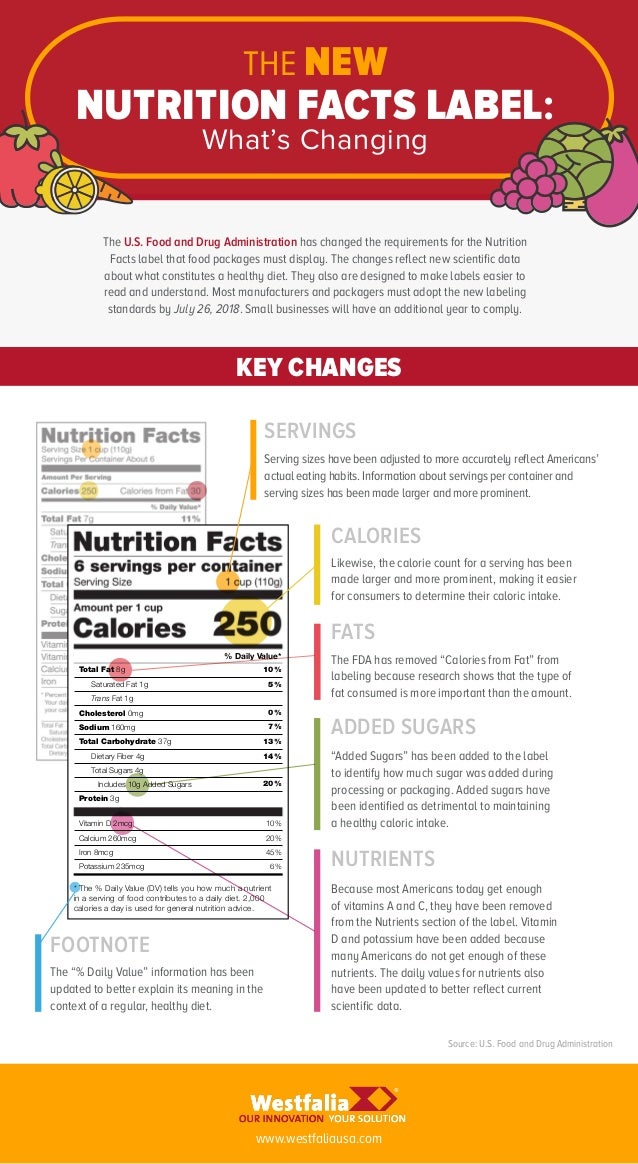
How to Interpret The New Nutrition Facts Label of 2020
As the way that the world sees diet and health trends evolve over time, health officials are tasked with staying ahead of the curve. For each new wellness craze comes the requirement of the FDA to vet and regulate what is made available to the public. This is to ensure that websites selling nutrients to better people’s health, such as gundry md are checked and ready for you to purchase from safely! These regulations are just some of the governing factors that affect the way that food-based operations are ran. This ranges from the creation of the nutrition facts label all the way down to how businesses pack, store and ship food. In the past year, the FDA has made significant changes to the information that is presented to consumers on the nutrition facts label. Some of these changes give a better understanding of the food that we eat, and how it affects different aspects of our lives every day.
What’s Changed?
Most notably, there have been some visual changes. The text for some units on the label has become much bolder. However, there’s much more than meets the eye.
- Serving size adjustments: in most cases, people are consuming more of the food they eat then they need to. Consider your favorite bag of chips for example. You tear open the bag, ready to finish it as fast as you can, only to notice that the suggested serving size is one-fifth of the bag. This was an ineffective method of limiting what people would eat, and as such, has been altered. The serving size has now been bolded and is placed in the centermost part of the label. One of the first things you’ll see is how many chips are suggested for you to snack on. In addition to this, food manufacturers have been suggested to update the portions included in each package to reflect more health-conscious servings.
- Calorie Totals: the calorie total of whatever packaged food you purchase is now printed with the largest font size out of all of the information. In addition to this, more information about the nutrition behind the calories is included on every label. Information like daily value percentages for the recommended 2000 calorie per day diet and a more precise total of chemicals such as sodium and cholesterol.
- Required Ingredient Listings: prior to these changes, sugars (including calories from sugar), vitamin D, and potassium were not required to be included on the nutrition facts label. The FDA decided that these were important ingredients to include on the label in order to establish healthy eating habits.
Why Were These Changes Made Now?
Food science and the understanding of a balanced nutrition are constantly evolving. In addition to this, the way in which the world eats has changed as well. As such, it is important for the FDA to make such adjustments though it may be difficult for all parties involved. On the other hand, for those that look to these labels as a means of establishing a healthy diet are receiving more information to remain healthier, it is something worth the effort of the FDA and all involved.
How Can Consumers Properly Utilize This Information?
More information about the composition of the food people consume gives more insight into how to create more healthy eating habits, have a more positive mood, and increase overall well-being.
- Knowing when certain foods should be eaten: now that more information is included in the nutrition facts label, you may stray away from a handful of chips before bed once you realize just how many added grams of sugar there is in the bag. These details were previously hidden from the consumer but were probably hindering someone’s sleep schedule without them realizing.
- Using Foods as mid-day pickup: If you’re feeling sluggish in the afternoon, or just need a kickstart to your afternoon workout, the new label gives people a better understanding of why a few almonds may be better for them than their favorite granola bar.
- Tracking your Intake: if the information was previously unclear, now is a better time than ever for consumers to be conscious of how much they’re actually eating on a daily basis. The easier the data is to access, the easier it becomes to track and better establish long-term healthy habits. This is ultimately the goal of the FDA as they make changes to the label over time.
Though the information seems to be as clear as it can be at this moment, it is ultimately up to consumers to decide what to do with it. If you’re presented with many options at the store, using this information to make the healthy choice can set someone down the right path of establishing a healthier life through healthier habits. Take some time to become familiar with the new information presented to you through these labels and put it to use for the health of you and your family.

Author bio: John Hinchey is VP of Sales for Westfalia Technologies, Inc., a leading provider of logistics solutions for plants, warehouses and distribution centers. He has more than 20 years of experience in manufacturing and warehouse automation.
- Fabulous Baby Shower Ideas to Try Soon - May 16, 2023
- Raw Manuka Honey Auckland New Zealand - March 10, 2023
- Discovering The Best Manuka Honey In Auckland: A Guide To Buying The Real Deal - March 10, 2023


